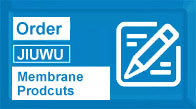In recent years, there has been a growing demand for more efficient and sustainable methods of water and wastewater treatment. Traditional filtration methods have their limitations, such as high energy consumption and the use of chemicals. However, advancements in ceramic membrane technology have revolutionized the water and wastewater treatment industry, providing a more effective and sustainable solution. In this blog, we will explore the applications of ceramic membrane technology and how it has transformed the industry.
One of the primary applications of ceramic membrane technology is in the filtration of drinking water. Ceramic membranes are highly porous, ensuring effective removal of particles, bacteria, and even viruses. The unique structure of the ceramic membrane allows for high flux rates without compromising the quality of the treated water. This technology provides a reliable and cost-effective method for producing clean and safe drinking water on a large scale.
Industrial processes often generate large volumes of wastewater containing various contaminants that can be harmful to the environment. Ceramic membrane technology offers an efficient solution for treating industrial wastewater. The high permeability and chemical resistance of ceramic membranes make them suitable for the separation of pollutants and the recovery of valuable resources. With ceramic membrane technology, industries can effectively remove toxic substances, such as heavy metals and organic compounds, from their wastewater before it is discharged, helping to protect the environment.
Ceramic membrane technology has also found its application in membrane bioreactor (MBR) systems. MBR systems combine the biological treatment of wastewater with membrane filtration, resulting in superior effluent quality. The ceramic membranes used in MBR systems offer several advantages, including high mechanical strength, excellent fouling resistance, and a longer lifespan compared to conventional polymeric membranes. These systems are particularly useful in treating wastewater from industries, hospitals, and residential complexes, where high-quality effluent is required.
Another noteworthy application of ceramic membrane technology is in zero liquid discharge (ZLD) systems. ZLD systems aim to eliminate liquid waste streams by recovering and reusing water from the treated wastewater. Ceramic membranes are capable of producing high-quality permeate that can be reused in various industrial processes. By implementing ZLD systems with ceramic membrane technology, industries can significantly reduce their water consumption and waste generation, leading to environmental sustainability and cost savings.
Jiuwu, a leading brand in ceramic membrane technology, has played a pivotal role in the development and advancements of these applications. Our ceramic membranes are designed to provide long-term performance and reliability in diverse water and wastewater treatment processes. With their comprehensive range of products, Jiuwu has been able to cater to the evolving needs of industries worldwide and ensure the highest standards of filtration and separation.
In conclusion, ceramic membrane technology has revolutionized the water and wastewater treatment industry by offering more efficient and sustainable solutions. From the filtration of drinking water to the treatment of industrial wastewater, ceramic membranes have proven to be a game-changer. The applications of ceramic membrane technology extend beyond traditional filtration methods, with its use in MBR systems and ZLD systems. As technology continues to advance, ceramic membrane technology is expected to further drive the progress of the water and wastewater treatment industry towards a more sustainable future.




 +86-25-58849045
+86-25-58849045
 +86-25-58749295
+86-25-58749295
 jiuwu@jiuwu.com
jiuwu@jiuwu.com
 No. 9 Park Road, Pukou District, Nanjing City (Sanqiao Factory)
No. 9 Park Road, Pukou District, Nanjing City (Sanqiao Factory) Call us on:
Call us on:  Email Us:
Email Us:  No. 9 Park Road, Pukou District, Nanjing City (Sanqiao Factory)
No. 9 Park Road, Pukou District, Nanjing City (Sanqiao Factory)

 English
English 한국어
한국어 français
français русский
русский Español
Español

